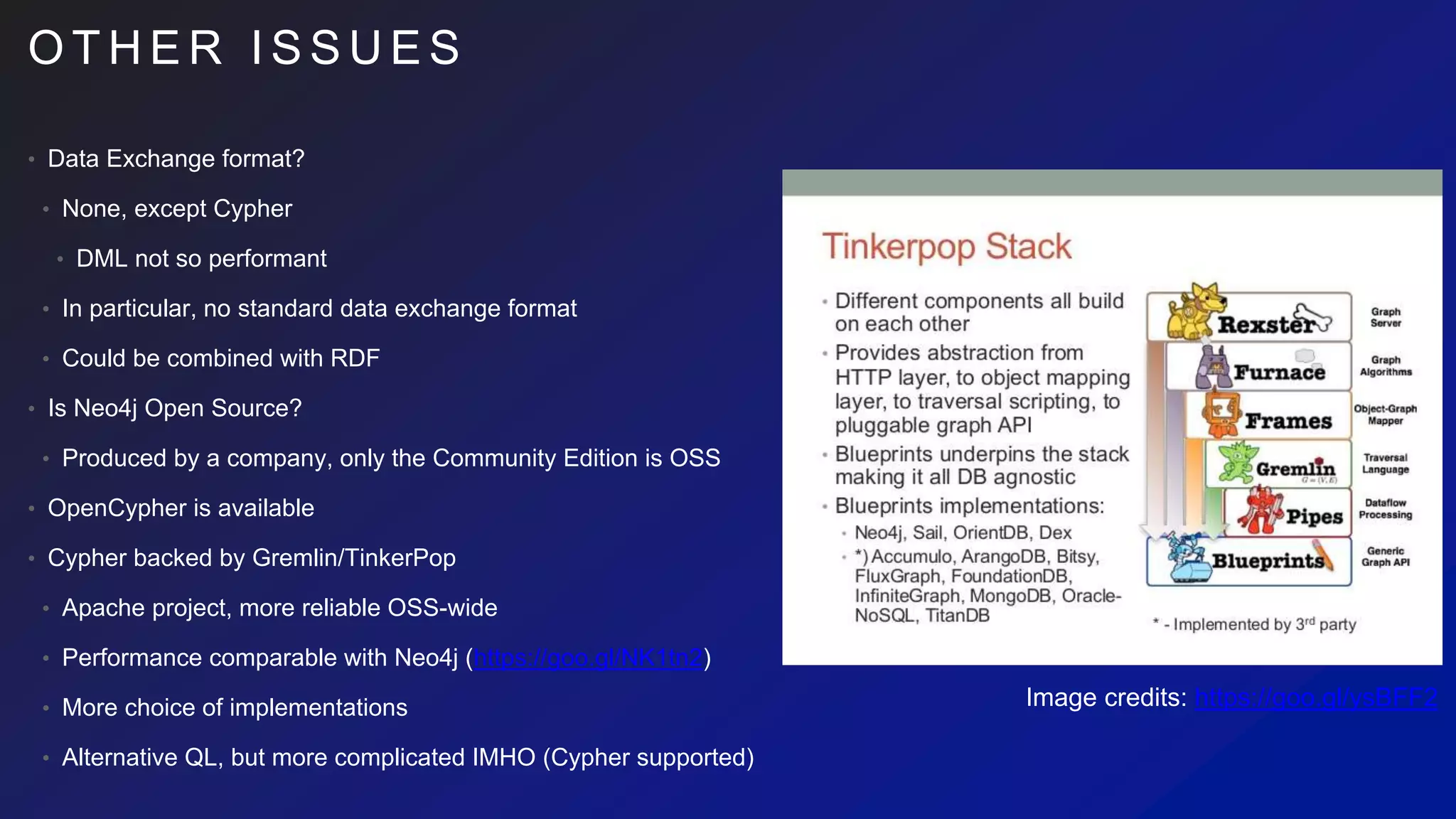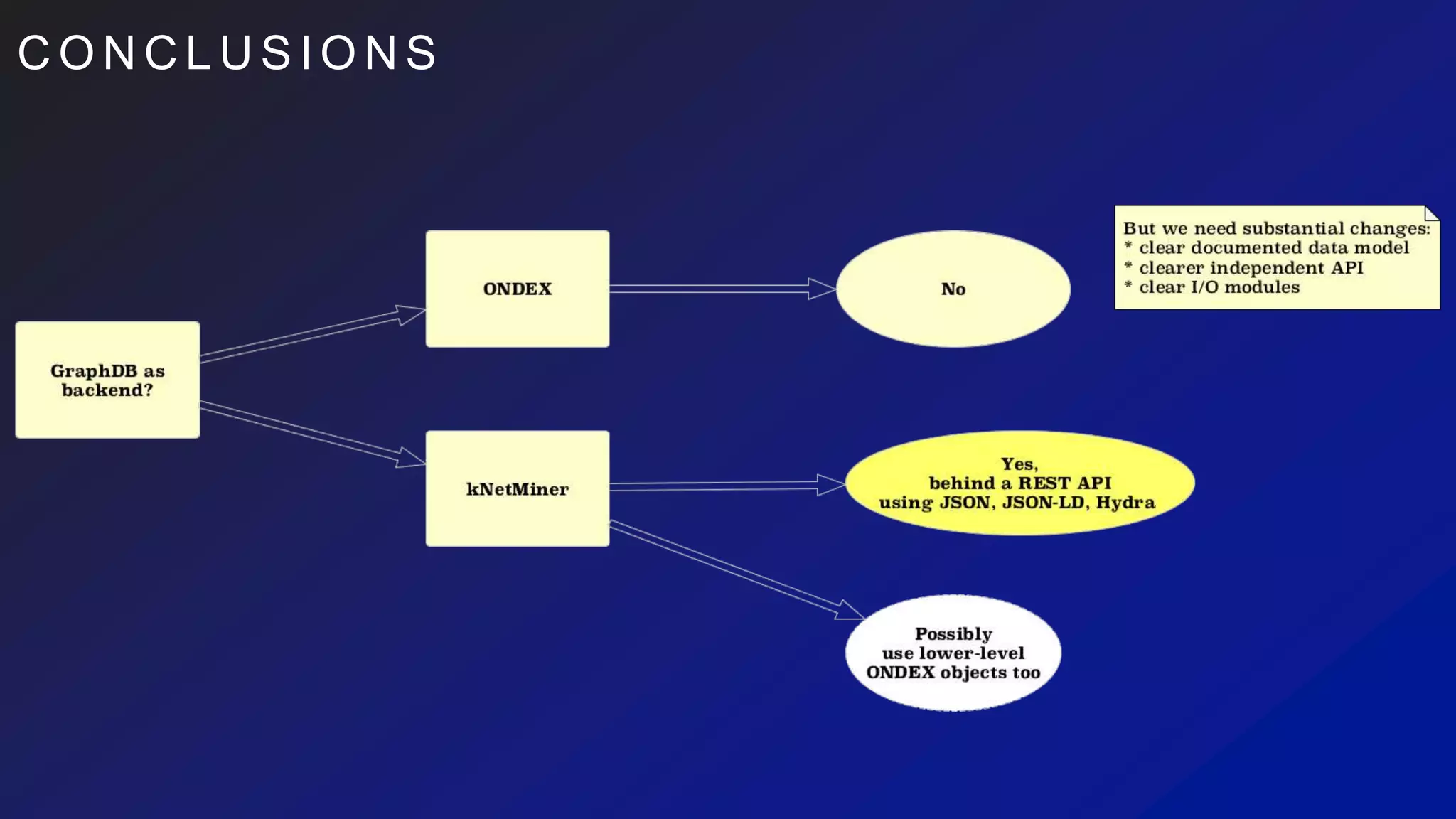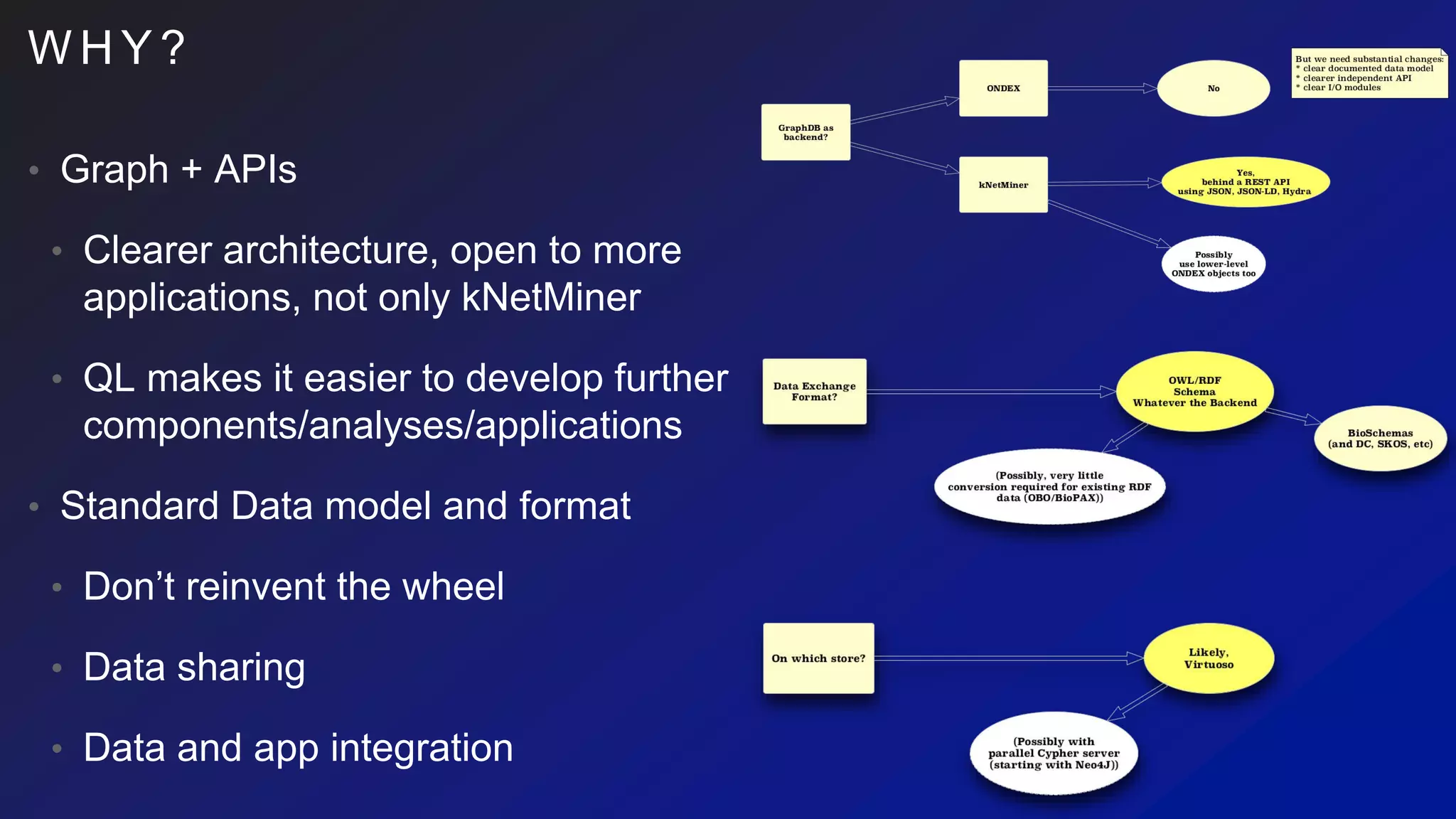This document discusses the evaluation of various graph databases (GDBs) related to ONDEX needs, including assessing performance, data models, and query languages of GDBs like RDF and Neo4j. It outlines specific test data and example queries for evaluating data integration and manipulation capabilities. The conclusions suggest a need for a standard data model and format to enhance data sharing and integration across applications.
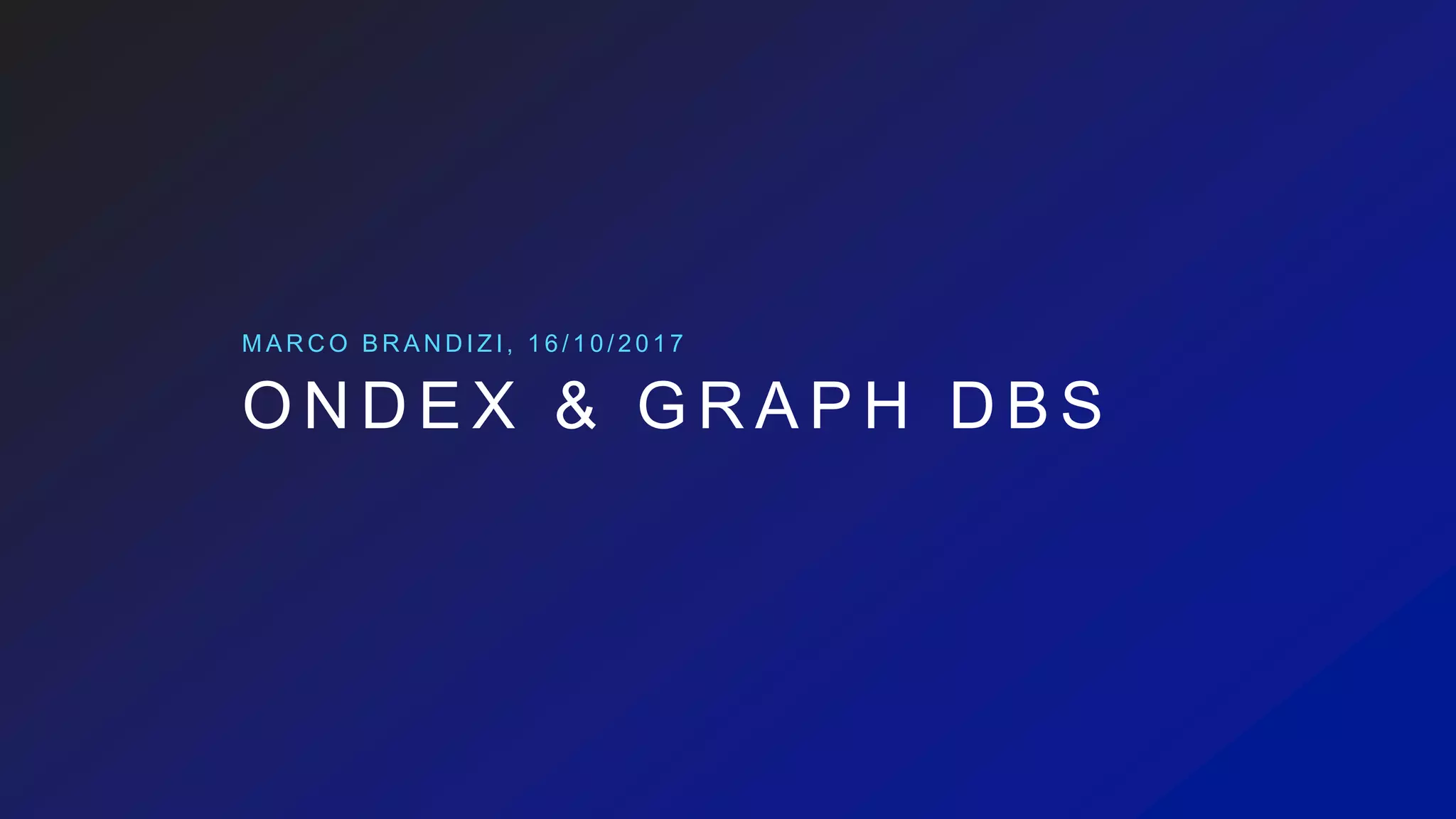
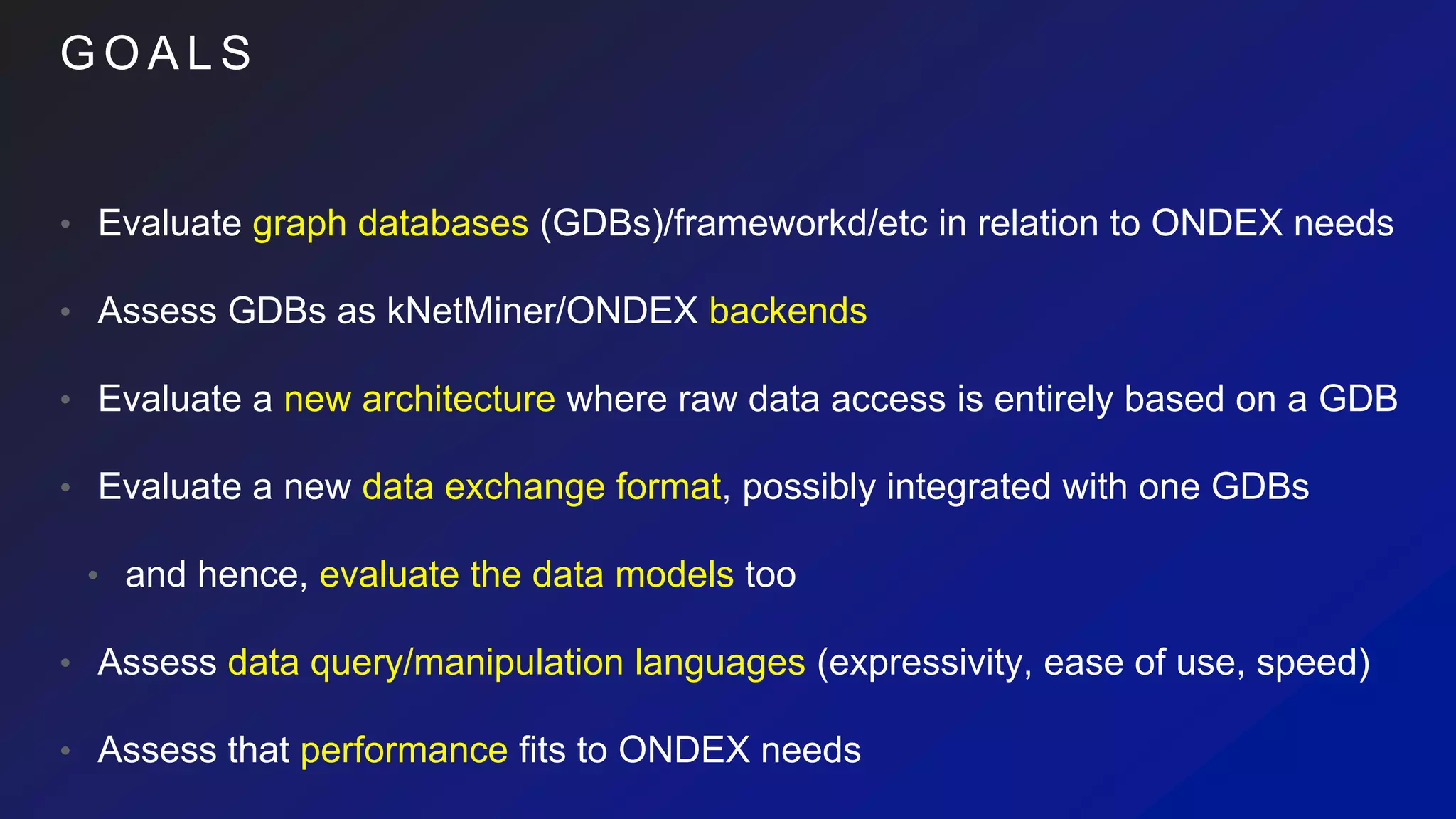
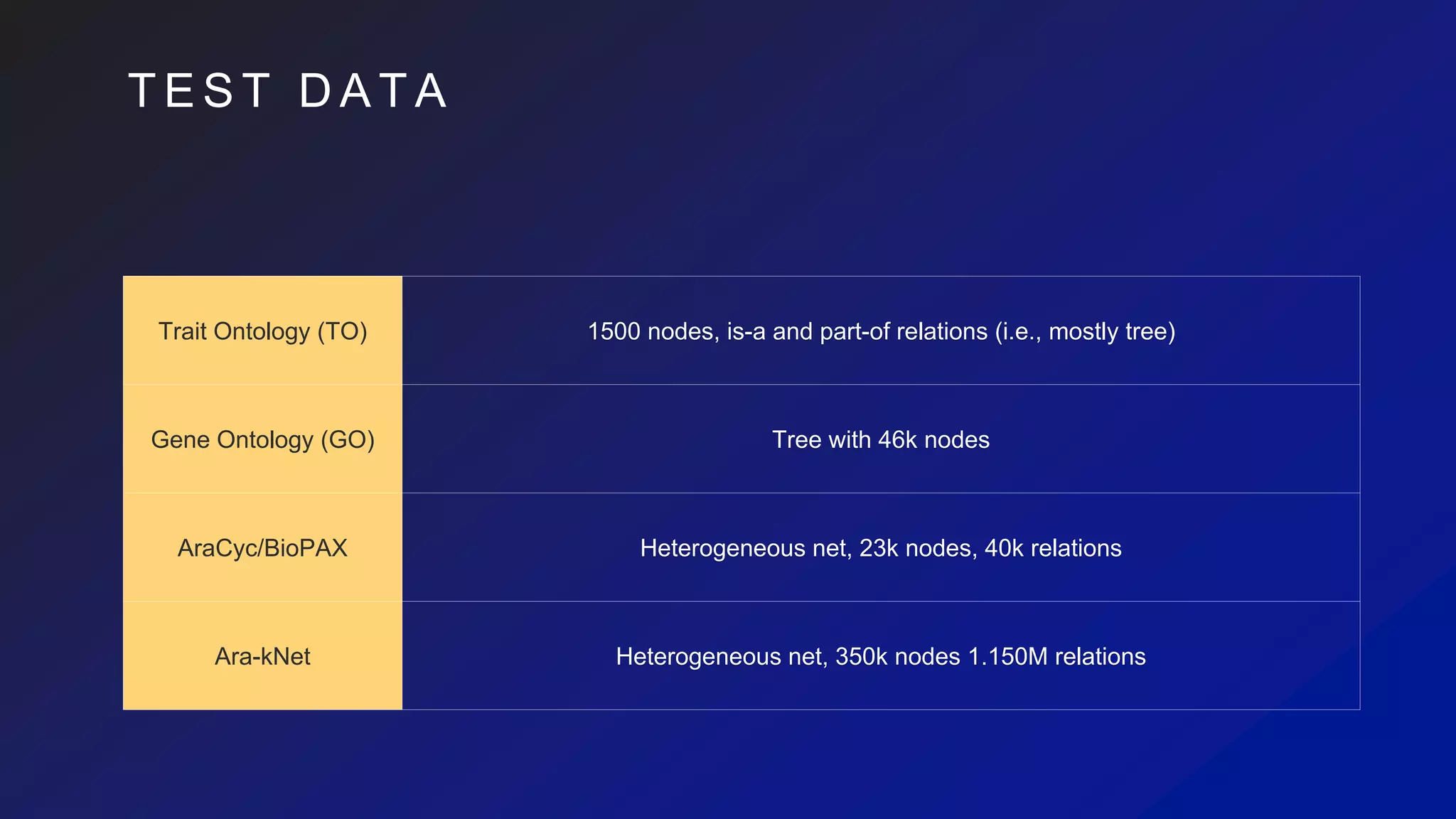
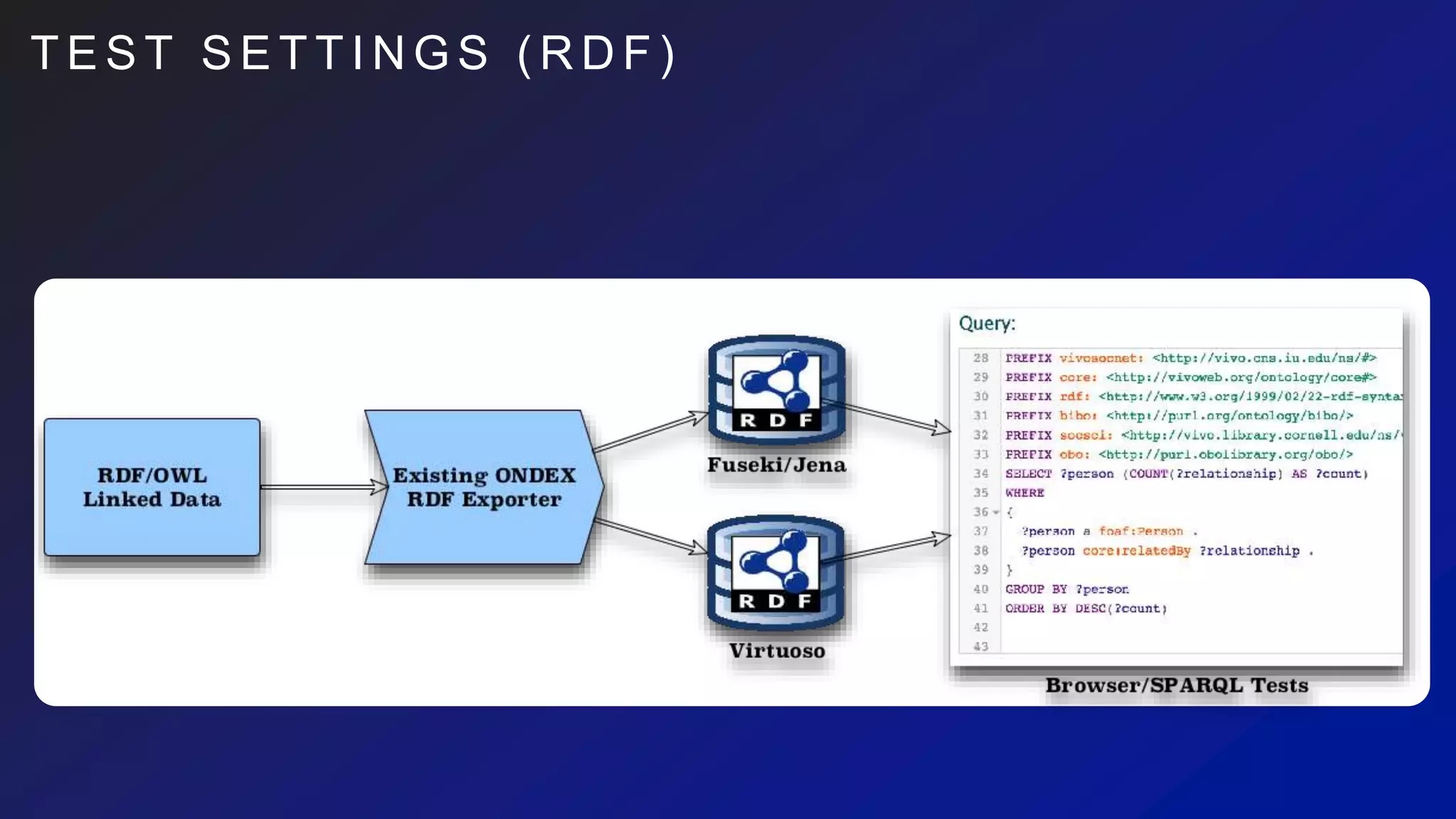
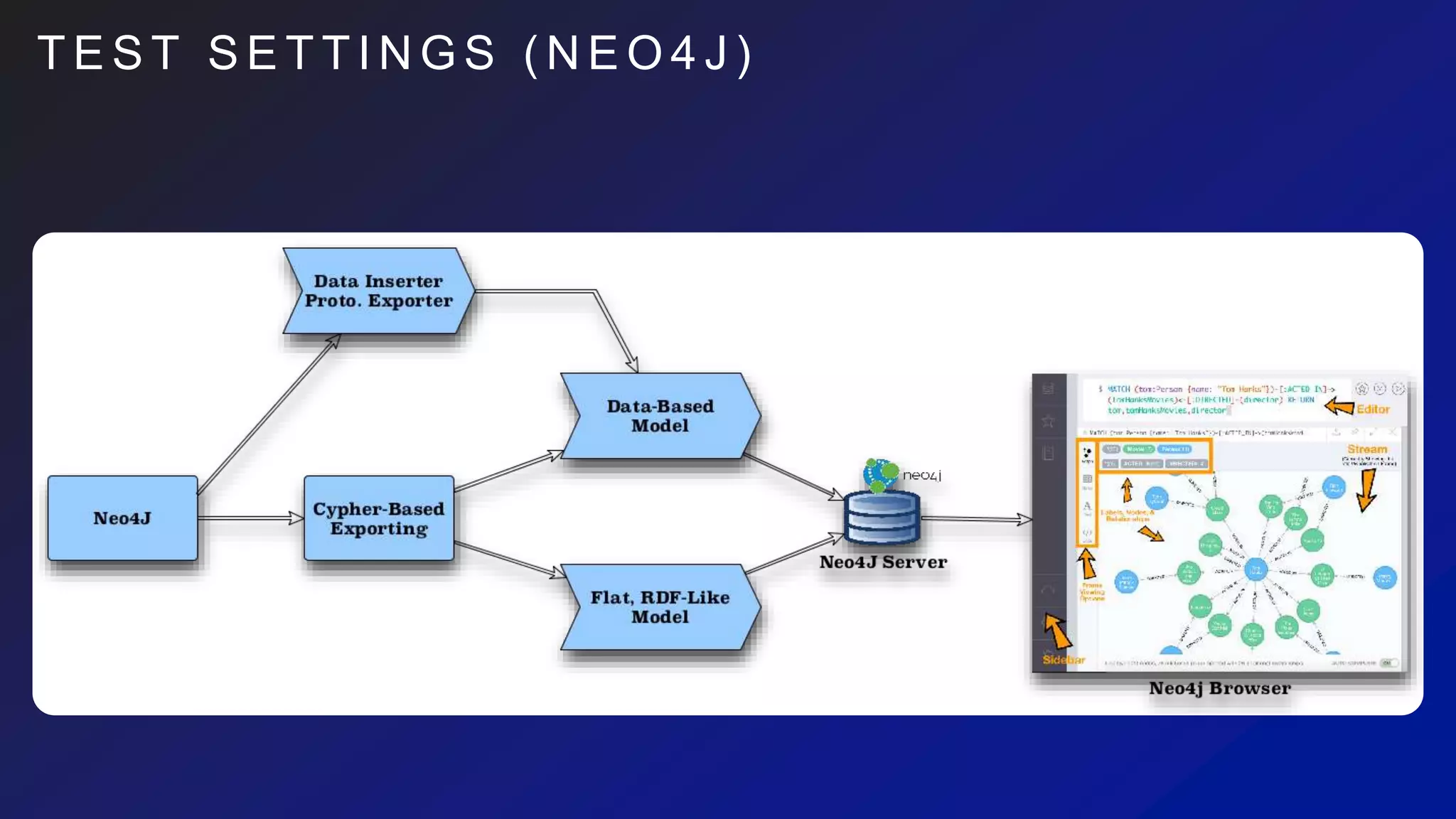

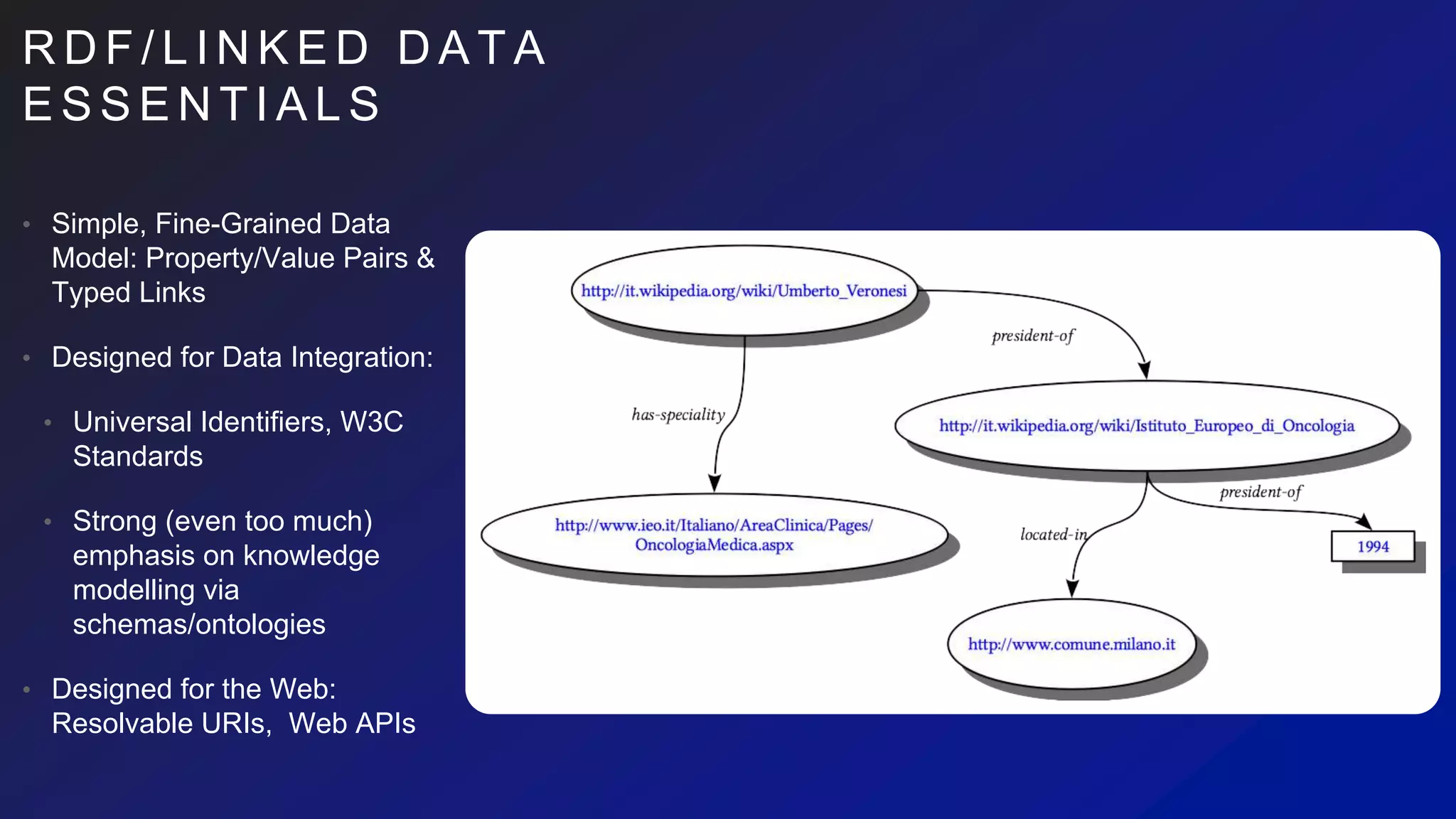
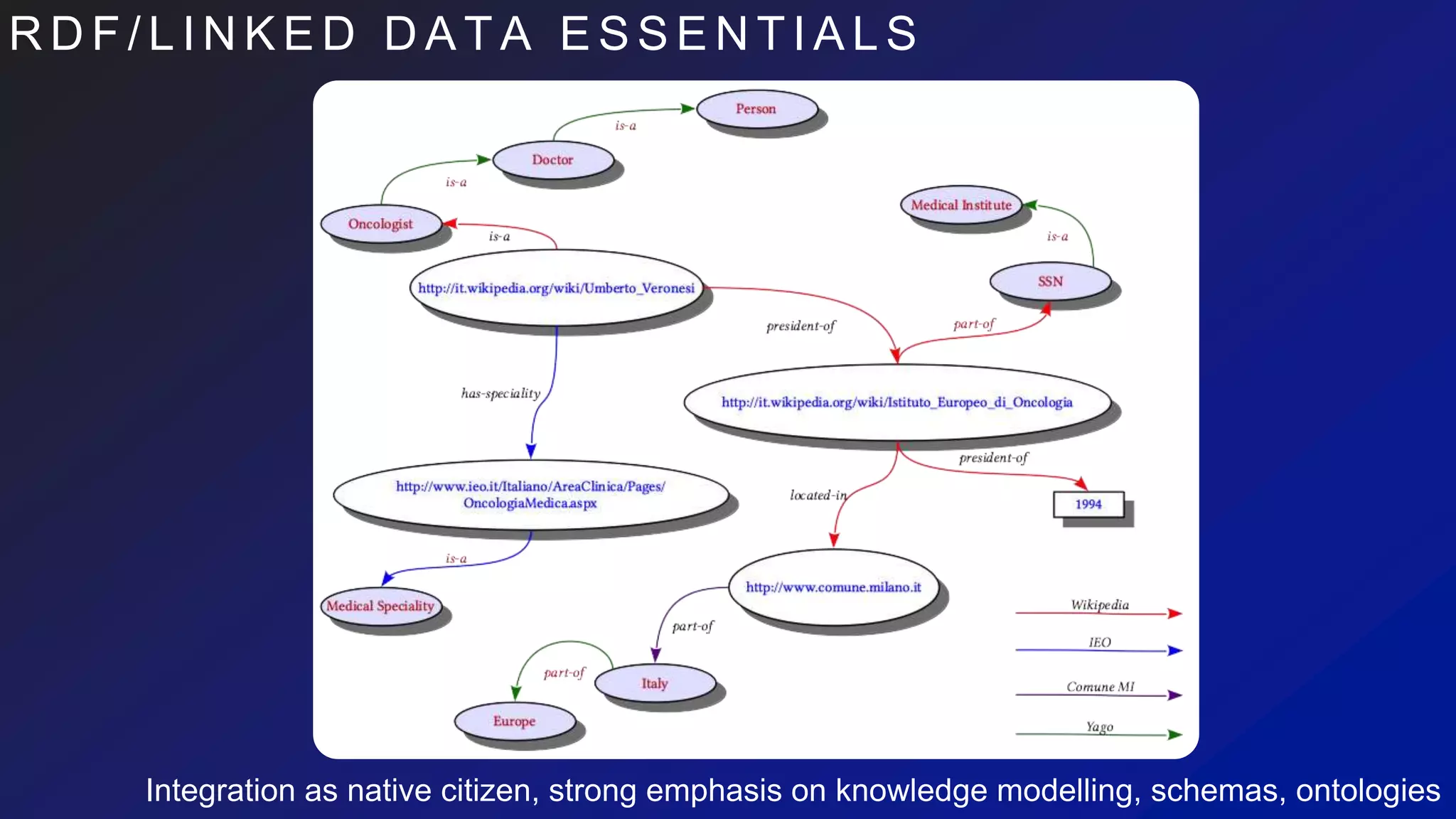
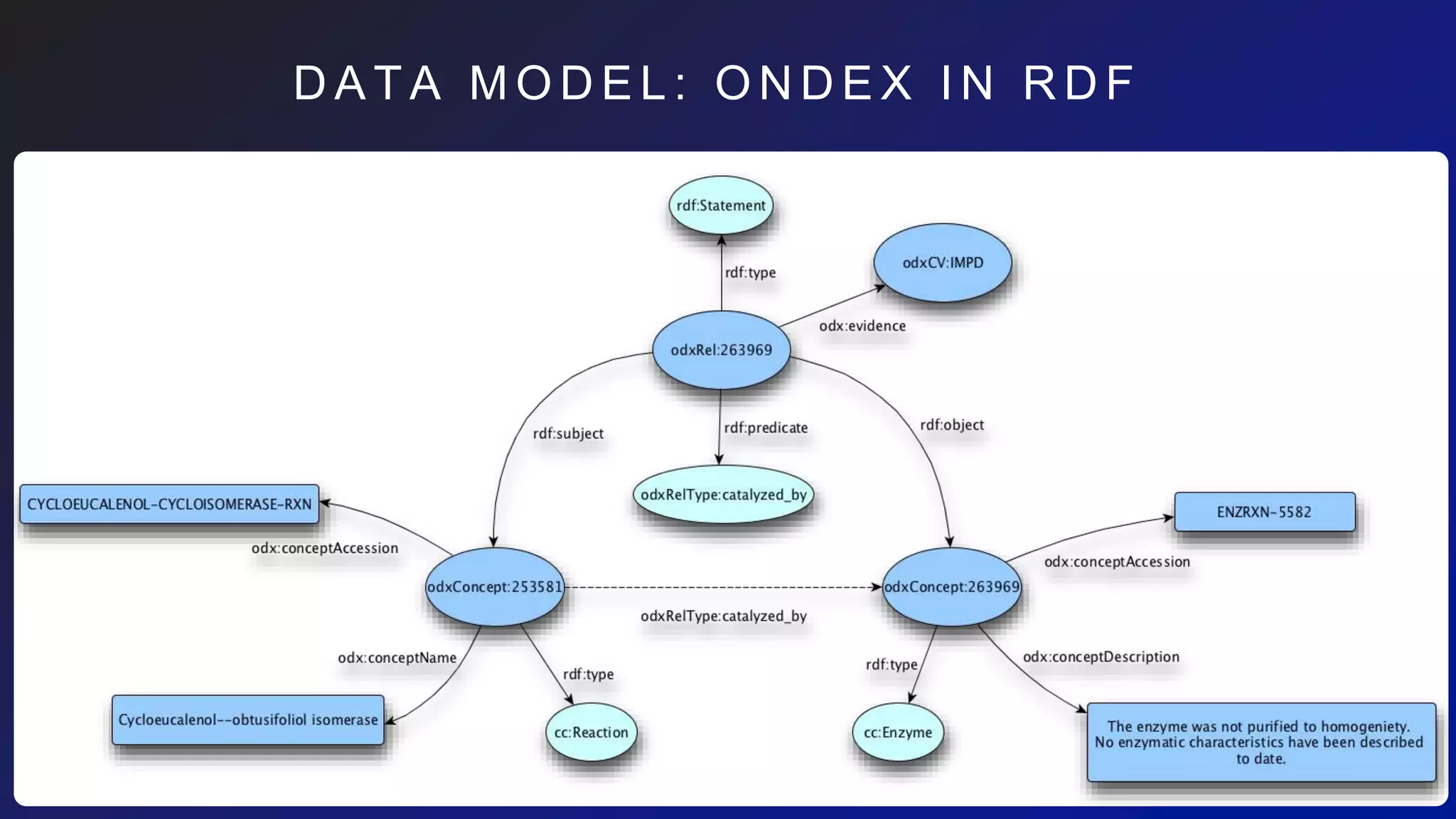


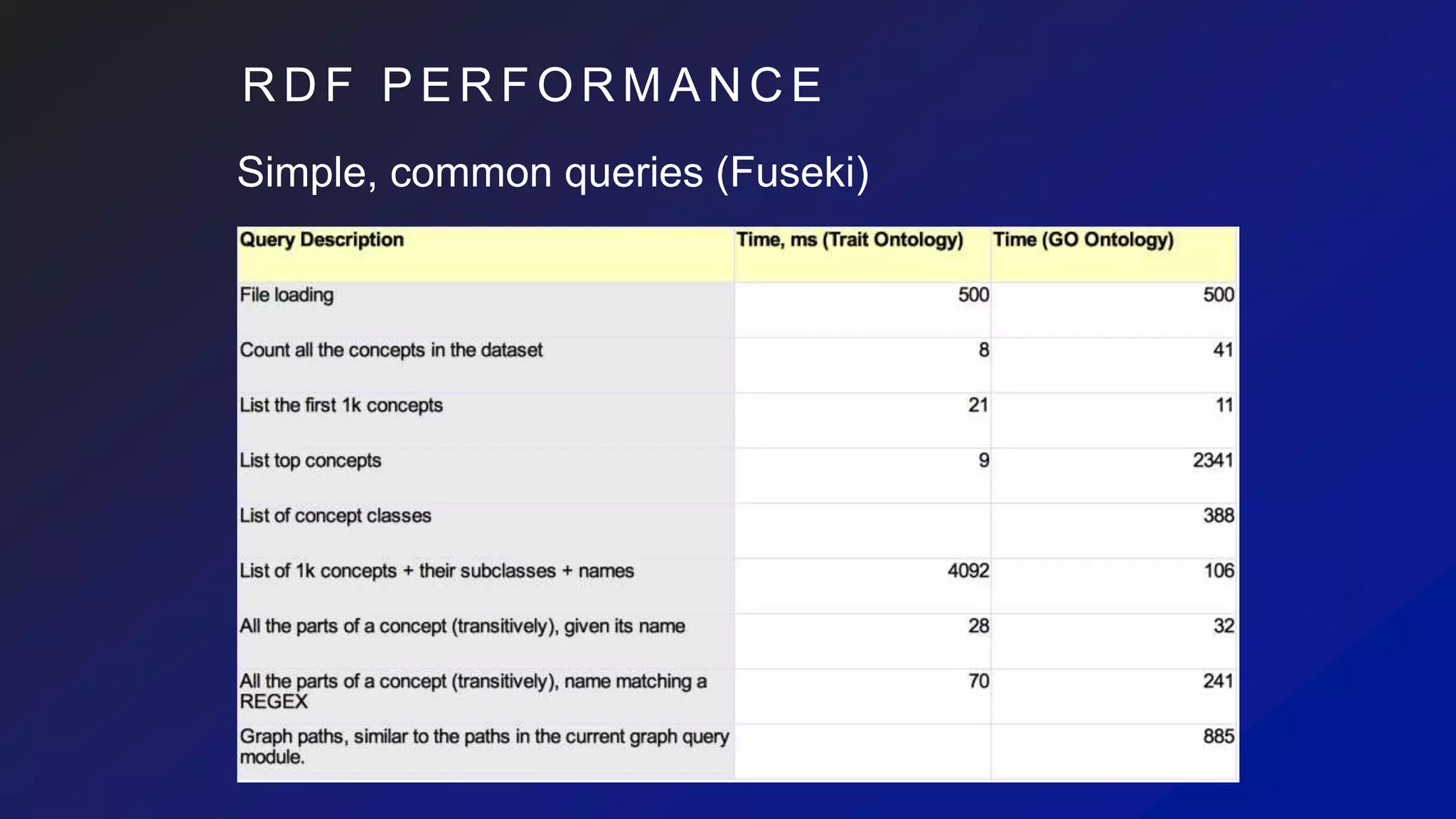
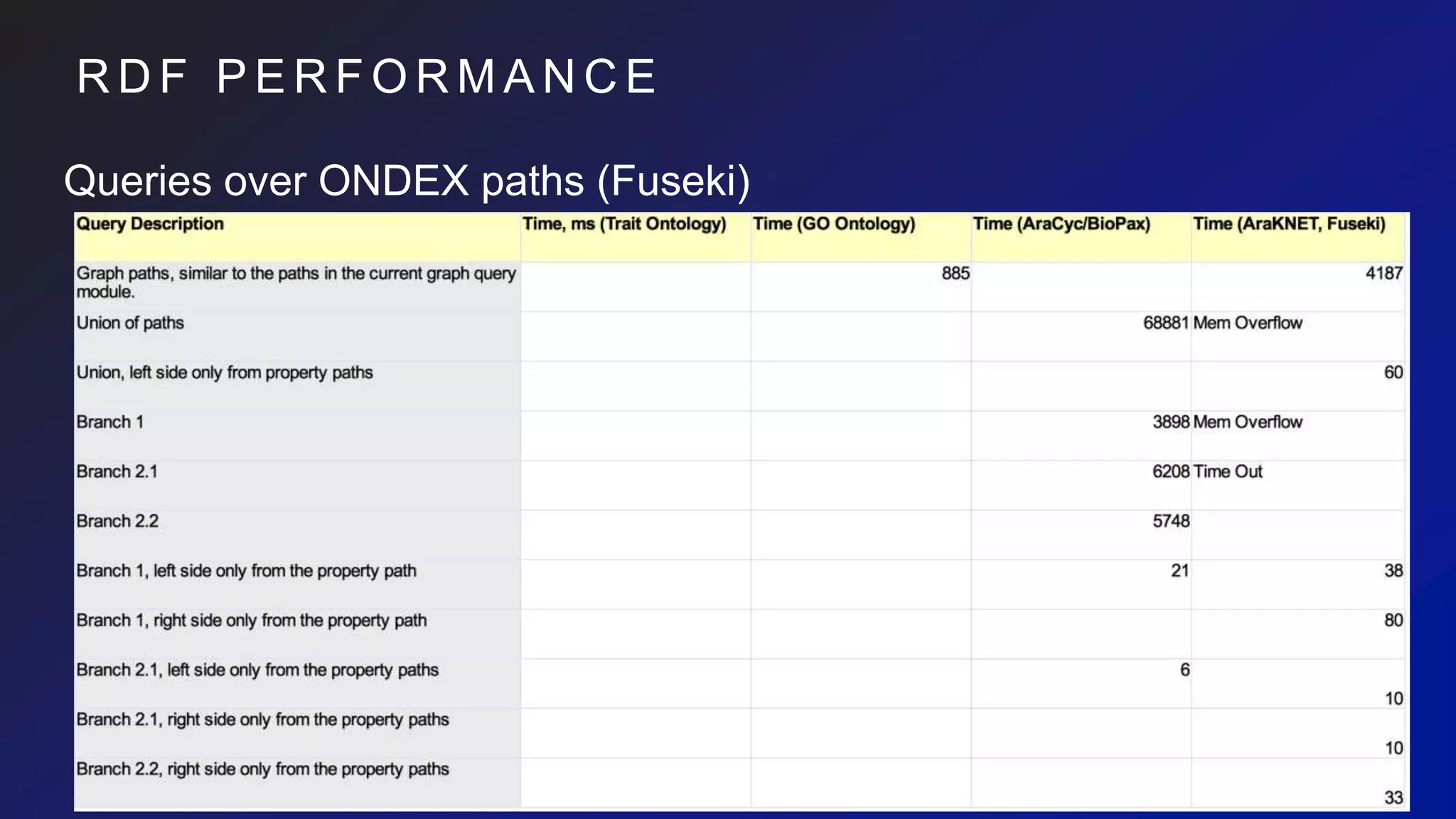
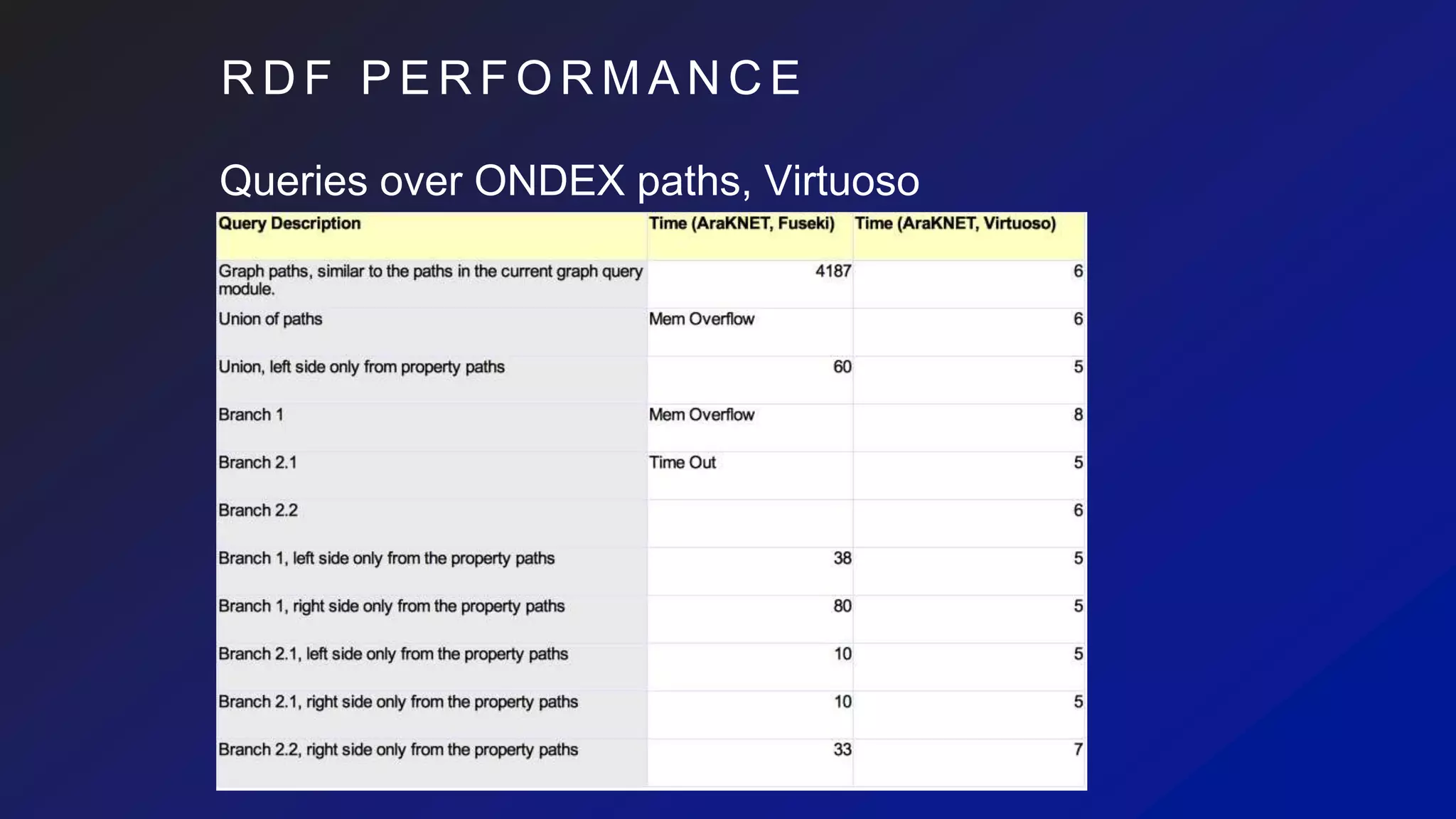



![C Y P H E R Q U E R Y / D M
L A N G U A G E
Proteins->Reactions->Pathways:
// chain of paths, node selection via property (exploits indices)
MATCH (prot:Protein) - [csby:consumed_by] -> (:Reaction) - [:part_of] -> (pway:Path{ title: ‘apoptosis’ })
// further conditions, but often not performant
WHERE prot.name =~ ‘(?i)^DNA.+’
// Usual projection and post-selection operators
RETURN prot.name, pway
// Relations can have properties
ORDER BY csby.pvalue
LIMIT 1000
Single-path (or same-direction branching) easy to write:
MATCH (prot:Protein) - [:pd_by|cs_by] -> (:Reaction) - [:part_of*1..3] ->
(pway:Path)
RETURN ID(prot), ID(pway) LIMIT 1000
// Very compact forms available, depending on the data
MATCH (prot:Protein) - (pway:Path) RETURN pway](https://image.slidesharecdn.com/ondexgraphdbeval-180926143849/75/A-Preliminary-survey-of-RDF-Neo4j-as-backends-for-KnetMiner-18-2048.jpg)
![C Y P H E R Q U E R Y / D M
L A N G U A G E
DML features:
MATCH (prot:Protein{ name:’P53’ }), (pway:Path{ title:’apoptosis’})
CREATE (prot) - [:participates_in] -> (pway)
DML features, embeddable in Java/Python/etc:
UNWIND $rows AS row // $rows set by the invoker, programmatically
MATCH (prot:Protein{ id: row.protId }), (pway:Path{ id:row.pathId })
CREATE (prot) - [relation:participates_in] -> (pway)
SET relation = row.relationAttributes](https://image.slidesharecdn.com/ondexgraphdbeval-180926143849/75/A-Preliminary-survey-of-RDF-Neo4j-as-backends-for-KnetMiner-19-2048.jpg)

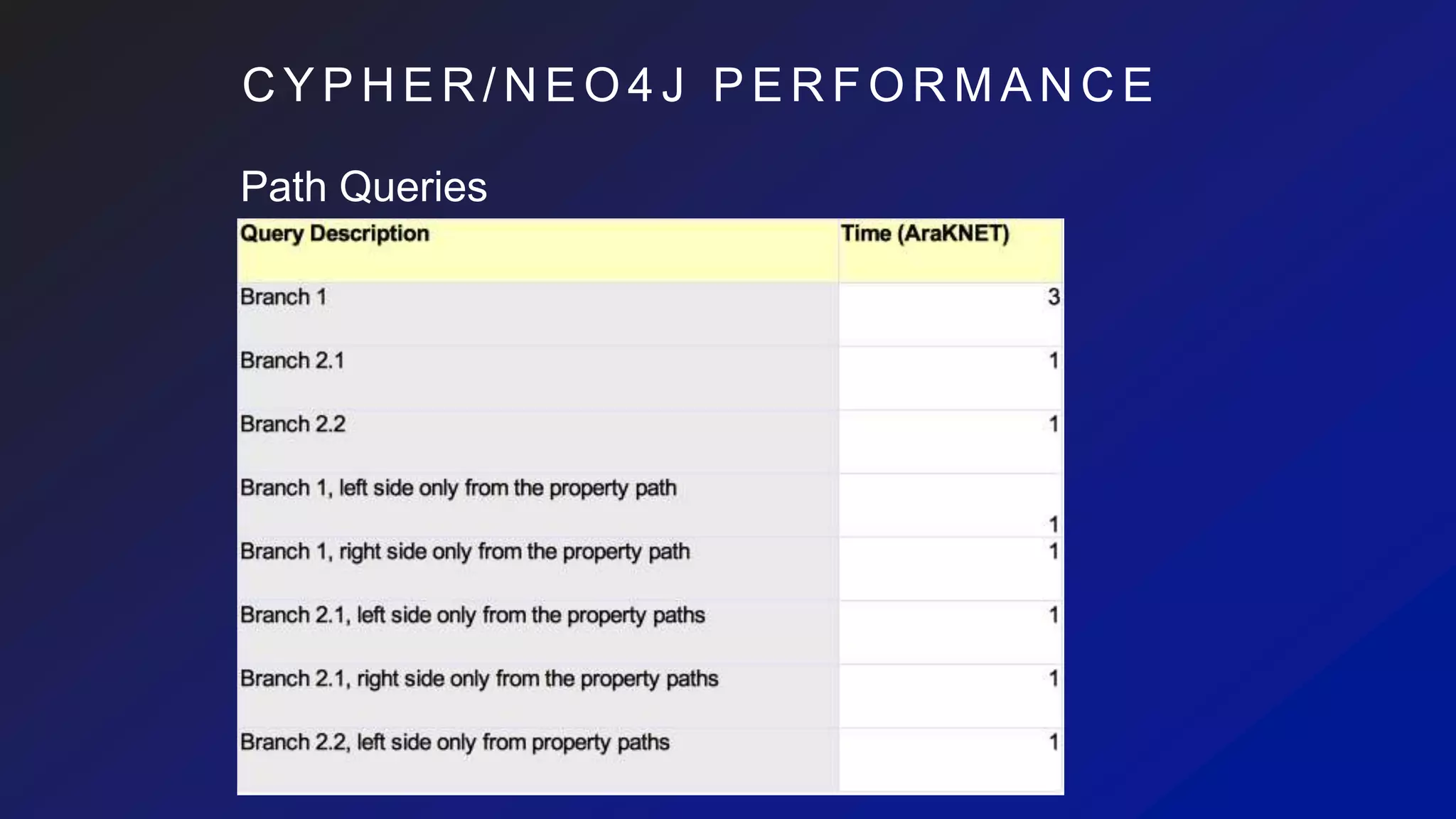
![S O U N D S G O O D , B U T …
select distinct ?prot ?pway {
where {
# Branch 1
…
}
union {
# Branch 2
…
{
# Branch 2.1
}
union {
# Branch 2.2
}
…
}
}
• In Cypher?!
• I couldn’t find a decent way, although it might be possible (https://goo.gl/Rpa9SM)
• Partially possible in straightforward way, but redundantly, e.g., Branch 2:
MATCH (prot:Protein) <- [:ac_by] - (:Enzyme) <- [:ca_by] - (:Transport) <- [:part_of] -
(pway:Path)
RETURN prot, pway LIMIT 100
UNION
MATCH (prot:Protein) - [:is_a] -> (:Enzyme) <- [:ca_by] - (:Transport) <- [:part_of] -
(pway:Path)
RETURN prot, pway LIMIT 100](https://image.slidesharecdn.com/ondexgraphdbeval-180926143849/75/A-Preliminary-survey-of-RDF-Neo4j-as-backends-for-KnetMiner-22-2048.jpg)
![A D D E N D U M
select distinct ?prot ?pway {
where {
# Branch 1
…
}
union {
# Branch 2
…
{
# Branch 2.1
}
union {
# Branch 2.2
}
…
}
}
• In Cypher?!
Unions+branches partially possible by means of paths in WHERE:
// Branch 2
MATCH (prot:Protein), (enz:Enzyme), (tns:Transport) - [:part_of] -> (path:Path)
WHERE ( (enz) - [:ac_by|:in_by] -> (:Comp) - [:pd_by|:cs_by] -> (tns) // Branch 2.1
OR (tns) - [:ca_by] -> (enz) ) //Branch 2.2 (pt1)
AND ( (prot) - [:is_a] -> (enz) OR (prot) <- [:ac_by] - (enz) ) // Branch 2.2 (pt2)
RETURN prot, path LIMIT 30
UNION
// Branch1
MATCH (prot:Protein) - [:pd_by|:cs_by] -> (:Reaction) - [:part_of] -> (path:Path)
RETURN prot, path LIMIT 30
• However,
• 41249ms to execute against wheat net.
• it generates cartesian products and can
easily explode](https://image.slidesharecdn.com/ondexgraphdbeval-180926143849/75/A-Preliminary-survey-of-RDF-Neo4j-as-backends-for-KnetMiner-23-2048.jpg)

![S O U N D S G O O D , B U T …
• Basically, it’s relational-oriented about schemas
• we might still be OK with metadata modelled as graphs, however:
• MATCH (molecule:Molecule),
(molType:Class)-[:is_a*]->(:Class{ name:’Protein’ })
WHERE LABELS molType IN LABELS (molecule)
• It’s expensive to compute (doesn’t exploit indexes)
• MATCH (molecule:Molecule:$additionalLabel) CREATE …
• Parameterising on labels not possible
• Requires non parametric Cypher string => UNWIND-based bulk loading impossible
• => bad performance
• Programmatic approach possible, but a lot of problems with things like Lucene version mismatches (one reason
being that ONDEX would require review and proper plug-in architecture)](https://image.slidesharecdn.com/ondexgraphdbeval-180926143849/75/A-Preliminary-survey-of-RDF-Neo4j-as-backends-for-KnetMiner-25-2048.jpg)
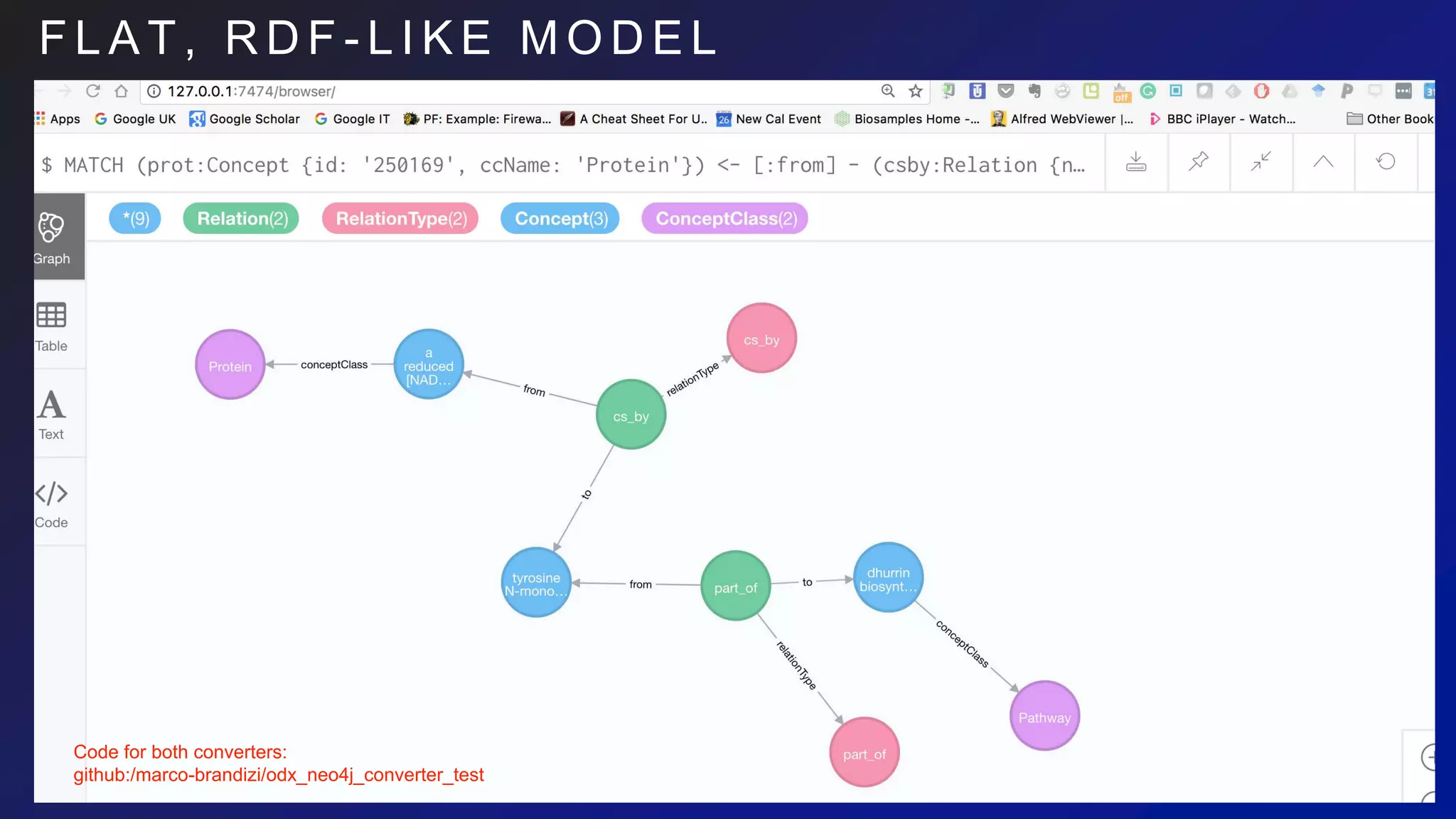
![F L A T M O D E L I M P A C T O N
C Y P H E R
Structured model:
MATCH (prot:Protein{ id: '250169' }) - [:cs_by] -> (react:Reaction) - [:part_of] -> (pway:Path)
RETURN * LIMIT 100
Flat model:
MATCH (prot:Concept {id: '250169', ccName: 'Protein'})
<- [:from] - (csby:Relation {name: 'cs_by' })
- [:to] -> (react:Concept { ccName: 'Reaction'})
<- [:from] - (partof:Relation {name:'part_of'}) - [:to]
-> (pway:Concept {ccName:'Path'})
RETURN * LIMIT 100
Rich schema-based queries
MATCH (mol:{Concept}) <- [:conceptClass] - (cc:ConceptClass),
(cc) <- [:specializationOf*] - (:ConceptClass{name:’Protein’}](https://image.slidesharecdn.com/ondexgraphdbeval-180926143849/75/A-Preliminary-survey-of-RDF-Neo4j-as-backends-for-KnetMiner-27-2048.jpg)
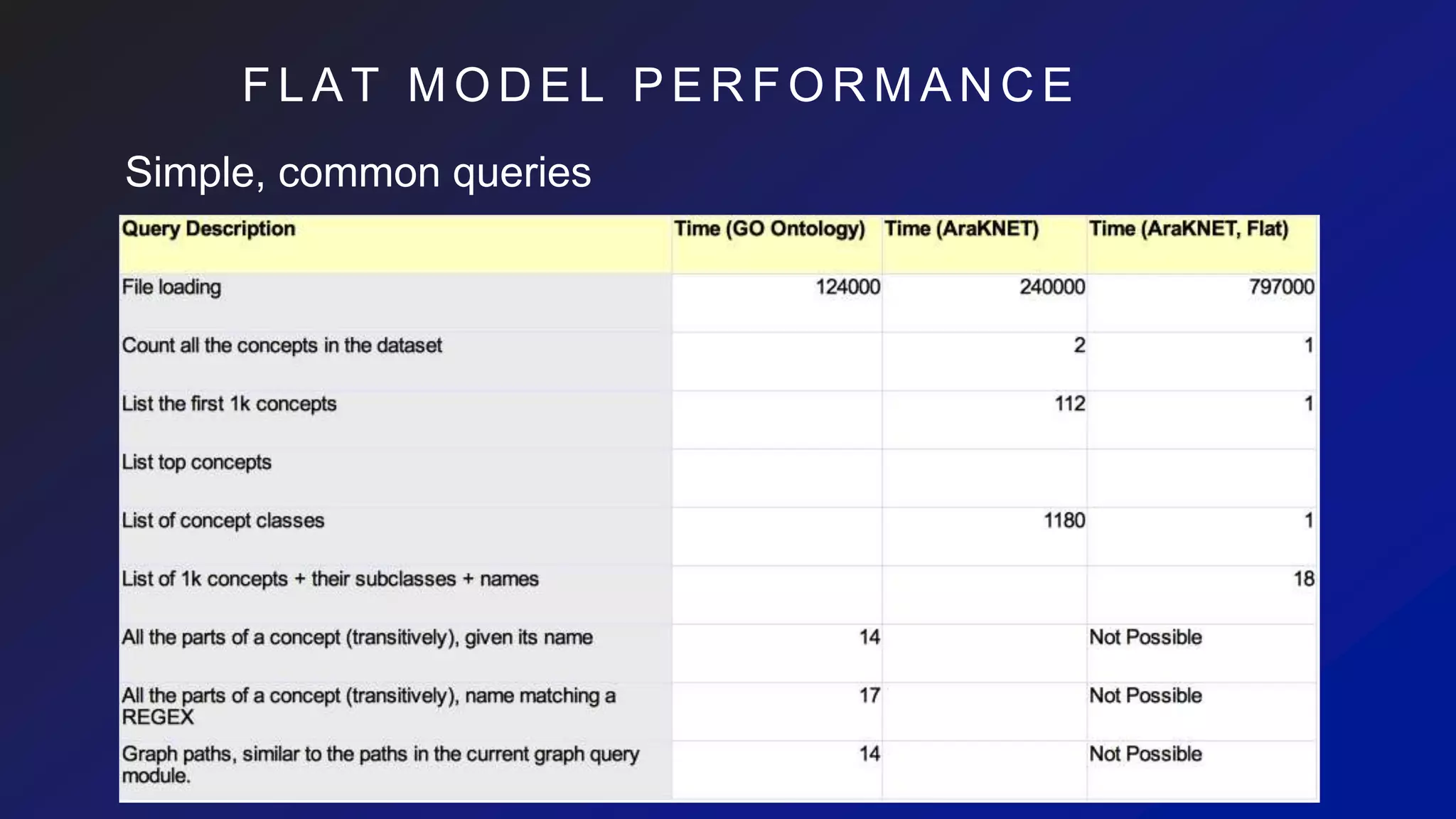
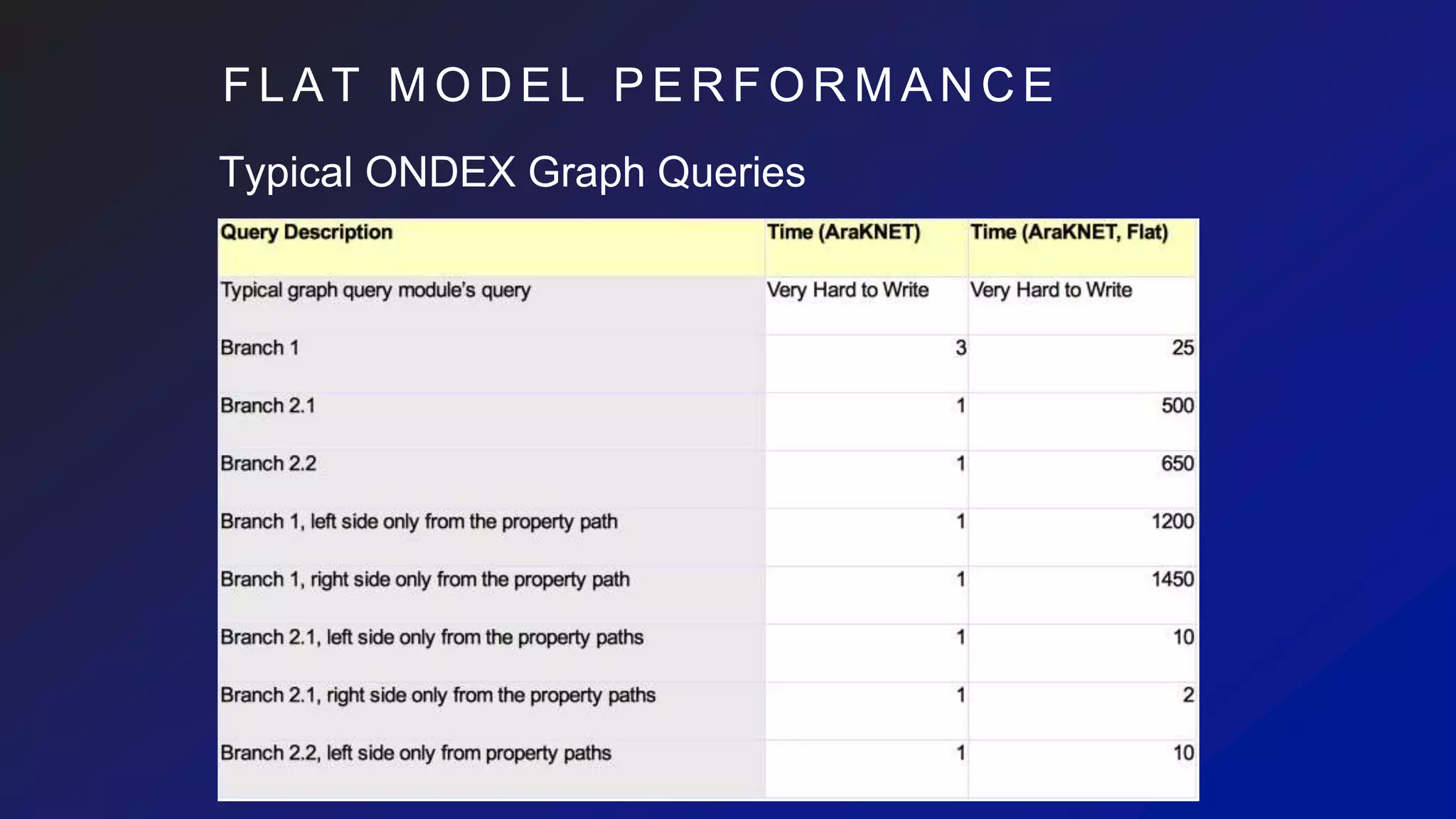
![I M P A C T O N C Y P H E R
Rich schema-based queries
From:
MATCH (molecule:Molecule), (molType:Class)-[:is_a*]->(:Class{ name:’Protein’ })
WHERE molType.label IN LABELS (molecule)
To:
MATCH (mol:{Concept}) <- [:conceptClass] - (cc:ConceptClass),
(cc) <- [:specializationOf*] - (:ConceptClass{name:’Protein’}
now it’s efficient-enough (especially with length restrictions)
However…](https://image.slidesharecdn.com/ondexgraphdbeval-180926143849/75/A-Preliminary-survey-of-RDF-Neo4j-as-backends-for-KnetMiner-30-2048.jpg)
![I M P A C T O N C Y P H E R
Rich schema-based queries
MATCH (mol:{Concept}) <- [:conceptClass] - (cc:ConceptClass),
(cc) <- [:specializationOf*] - (:ConceptClass{name:’Protein’}
now it’s efficient-enough (especially with length restrictions)
However…
from: MATCH (react:Reaction) - [:part_of] -> (pway:Path)
to: MATCH (react:Concept {ccName: ‘Reaction’})
<- [:from] - (partof:Relation {name:'part_of'})
- [:to] -> (pway:Concept {ccName:'Path'})
What if we want variable-length part_of?
Not currently possible in Cypher (nor in SPARQL),
maybe in future (https://github.com/neo4j/neo4j/issues/88)
=> Having both model, redundantly, would probably be worth
=> makes it not so different than RDF](https://image.slidesharecdn.com/ondexgraphdbeval-180926143849/75/A-Preliminary-survey-of-RDF-Neo4j-as-backends-for-KnetMiner-31-2048.jpg)
